+ Open data
Open data
- Basic information
Basic information
| Entry | Database: PDB / ID: 4wwa | ||||||
|---|---|---|---|---|---|---|---|
| Title | Crystal structure of binary complex Bud32-Cgi121 | ||||||
 Components Components |
| ||||||
 Keywords Keywords |  TRANSFERASE / KEOPS / binary complex / Bud32-Cgi121 / tRNA t6A / TRANSFERASE / KEOPS / binary complex / Bud32-Cgi121 / tRNA t6A /  hydrolase hydrolase | ||||||
| Function / homology |  Function and homology information Function and homology informationtRNA threonylcarbamoyladenosine metabolic process / EKC/KEOPS complex / tRNA threonylcarbamoyladenosine modification / cellular bud site selection /  Hydrolases; Acting on acid anhydrides / telomere maintenance via recombination / Hydrolases; Acting on acid anhydrides / telomere maintenance via recombination /  telomere maintenance / maintenance of translational fidelity / DNA recombination / telomere maintenance / maintenance of translational fidelity / DNA recombination /  chromosome, telomeric region ...tRNA threonylcarbamoyladenosine metabolic process / EKC/KEOPS complex / tRNA threonylcarbamoyladenosine modification / cellular bud site selection / chromosome, telomeric region ...tRNA threonylcarbamoyladenosine metabolic process / EKC/KEOPS complex / tRNA threonylcarbamoyladenosine modification / cellular bud site selection /  Hydrolases; Acting on acid anhydrides / telomere maintenance via recombination / Hydrolases; Acting on acid anhydrides / telomere maintenance via recombination /  telomere maintenance / maintenance of translational fidelity / DNA recombination / telomere maintenance / maintenance of translational fidelity / DNA recombination /  chromosome, telomeric region / chromosome, telomeric region /  non-specific serine/threonine protein kinase / non-specific serine/threonine protein kinase /  phosphorylation / protein serine kinase activity / protein serine/threonine kinase activity / phosphorylation / protein serine kinase activity / protein serine/threonine kinase activity /  ATP hydrolysis activity / positive regulation of transcription by RNA polymerase II / ATP hydrolysis activity / positive regulation of transcription by RNA polymerase II /  nucleoplasm / nucleoplasm /  ATP binding / ATP binding /  nucleus / nucleus /  cytosol / cytosol /  cytoplasm cytoplasmSimilarity search - Function | ||||||
| Biological species |   Saccharomyces cerevisiae (brewer's yeast) Saccharomyces cerevisiae (brewer's yeast) | ||||||
| Method |  X-RAY DIFFRACTION / X-RAY DIFFRACTION /  SYNCHROTRON / SYNCHROTRON /  MOLECULAR REPLACEMENT / Resolution: 2.953 Å MOLECULAR REPLACEMENT / Resolution: 2.953 Å | ||||||
 Authors Authors | Zhang, W. / van Tilbeurgh, H. | ||||||
 Citation Citation |  Journal: Nucleic Acids Res. / Year: 2015 Journal: Nucleic Acids Res. / Year: 2015Title: Crystal structures of the Gon7/Pcc1 and Bud32/Cgi121 complexes provide a model for the complete yeast KEOPS complex. Authors: Zhang, W. / Collinet, B. / Graille, M. / Daugeron, M.C. / Lazar, N. / Libri, D. / Durand, D. / van Tilbeurgh, H. | ||||||
| History |
|
- Structure visualization
Structure visualization
| Structure viewer | Molecule:  Molmil Molmil Jmol/JSmol Jmol/JSmol |
|---|
- Downloads & links
Downloads & links
- Download
Download
| PDBx/mmCIF format |  4wwa.cif.gz 4wwa.cif.gz | 85.8 KB | Display |  PDBx/mmCIF format PDBx/mmCIF format |
|---|---|---|---|---|
| PDB format |  pdb4wwa.ent.gz pdb4wwa.ent.gz | 66.1 KB | Display |  PDB format PDB format |
| PDBx/mmJSON format |  4wwa.json.gz 4wwa.json.gz | Tree view |  PDBx/mmJSON format PDBx/mmJSON format | |
| Others |  Other downloads Other downloads |
-Validation report
| Arichive directory |  https://data.pdbj.org/pub/pdb/validation_reports/ww/4wwa https://data.pdbj.org/pub/pdb/validation_reports/ww/4wwa ftp://data.pdbj.org/pub/pdb/validation_reports/ww/4wwa ftp://data.pdbj.org/pub/pdb/validation_reports/ww/4wwa | HTTPS FTP |
|---|
-Related structure data
| Related structure data | 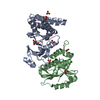 4ww5C  4ww7C 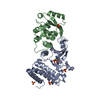 4ww9C 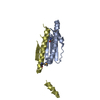 4wx8C 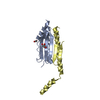 4wxaC  4xahC C: citing same article ( |
|---|---|
| Similar structure data |
- Links
Links
- Assembly
Assembly
| Deposited unit | 
| ||||||||
|---|---|---|---|---|---|---|---|---|---|
| 1 |
| ||||||||
| Unit cell |
|
- Components
Components
| #1: Protein | Mass: 29982.377 Da / Num. of mol.: 1 Source method: isolated from a genetically manipulated source Source: (gene. exp.)   Saccharomyces cerevisiae (brewer's yeast) Saccharomyces cerevisiae (brewer's yeast)Strain: ATCC 204508 / S288c / Gene: BUD32, LDB14, YGR262C Production host:   Escherichia coli 'BL21-Gold(DE3)pLysS AG' (bacteria) Escherichia coli 'BL21-Gold(DE3)pLysS AG' (bacteria)References: UniProt: P53323,  Hydrolases; Acting on acid anhydrides, Hydrolases; Acting on acid anhydrides,  non-specific serine/threonine protein kinase non-specific serine/threonine protein kinase | ||
|---|---|---|---|
| #2: Protein | Mass: 21515.695 Da / Num. of mol.: 1 Source method: isolated from a genetically manipulated source Source: (gene. exp.)   Saccharomyces cerevisiae (brewer's yeast) Saccharomyces cerevisiae (brewer's yeast)Strain: ATCC 204508 / S288c / Gene: CGI121, YML036W Production host:   Escherichia coli 'BL21-Gold(DE3)pLysS AG' (bacteria) Escherichia coli 'BL21-Gold(DE3)pLysS AG' (bacteria)References: UniProt: Q03705 | ||
| #3: Chemical | ChemComp-SO4 /  Sulfate Sulfate#4: Water | ChemComp-HOH / |  Water Water |
-Experimental details
-Experiment
| Experiment | Method:  X-RAY DIFFRACTION X-RAY DIFFRACTION |
|---|
- Sample preparation
Sample preparation
| Crystal | Density Matthews: 2.61 Å3/Da / Density % sol: 52.87 % |
|---|---|
Crystal grow | Temperature: 293 K / Method: vapor diffusion, hanging drop / pH: 4.6 Details: 0.1 M Sodium Acetate pH 4.6, 2.0 M Ammounium Sulfate, 0.1 M NaCl and 10 mM Tris-HCl pH 7.5 PH range: 4.6-5.0 |
-Data collection
| Diffraction | Mean temperature: 100 K |
|---|---|
| Diffraction source | Source:  SYNCHROTRON / Site: SYNCHROTRON / Site:  SOLEIL SOLEIL  / Beamline: PROXIMA 1 / Wavelength: 0.97918 Å / Beamline: PROXIMA 1 / Wavelength: 0.97918 Å |
| Detector | Type: PSI PILATUS 6M / Detector: PIXEL / Date: Sep 30, 2011 |
| Radiation | Protocol: SINGLE WAVELENGTH / Monochromatic (M) / Laue (L): M / Scattering type: x-ray |
| Radiation wavelength | Wavelength : 0.97918 Å / Relative weight: 1 : 0.97918 Å / Relative weight: 1 |
| Reflection | Resolution: 2.95→43.2 Å / Num. obs: 11205 / % possible obs: 99.8 % / Redundancy: 4.58 % / Rsym value: 0.124 / Net I/σ(I): 14.32 |
| Reflection shell | Resolution: 2.953→3.059 Å |
- Processing
Processing
| Software |
| |||||||||||||||||||||||||||||||||||
|---|---|---|---|---|---|---|---|---|---|---|---|---|---|---|---|---|---|---|---|---|---|---|---|---|---|---|---|---|---|---|---|---|---|---|---|---|
| Refinement | Method to determine structure : :  MOLECULAR REPLACEMENT / Resolution: 2.953→43.2 Å / SU ML: 0.56 / Cross valid method: THROUGHOUT / σ(F): 2 / Phase error: 31.22 / Stereochemistry target values: ML MOLECULAR REPLACEMENT / Resolution: 2.953→43.2 Å / SU ML: 0.56 / Cross valid method: THROUGHOUT / σ(F): 2 / Phase error: 31.22 / Stereochemistry target values: ML
| |||||||||||||||||||||||||||||||||||
| Solvent computation | Shrinkage radii: 0.9 Å / VDW probe radii: 1.11 Å / Solvent model: FLAT BULK SOLVENT MODEL / Bsol: 52.467 Å2 / ksol: 0.349 e/Å3 | |||||||||||||||||||||||||||||||||||
| Displacement parameters |
| |||||||||||||||||||||||||||||||||||
| Refinement step | Cycle: LAST / Resolution: 2.953→43.2 Å
| |||||||||||||||||||||||||||||||||||
| Refine LS restraints |
| |||||||||||||||||||||||||||||||||||
| LS refinement shell |
|
 Movie
Movie Controller
Controller




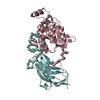

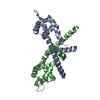
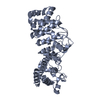
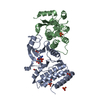
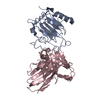
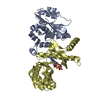
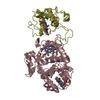
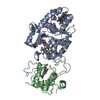
 PDBj
PDBj


